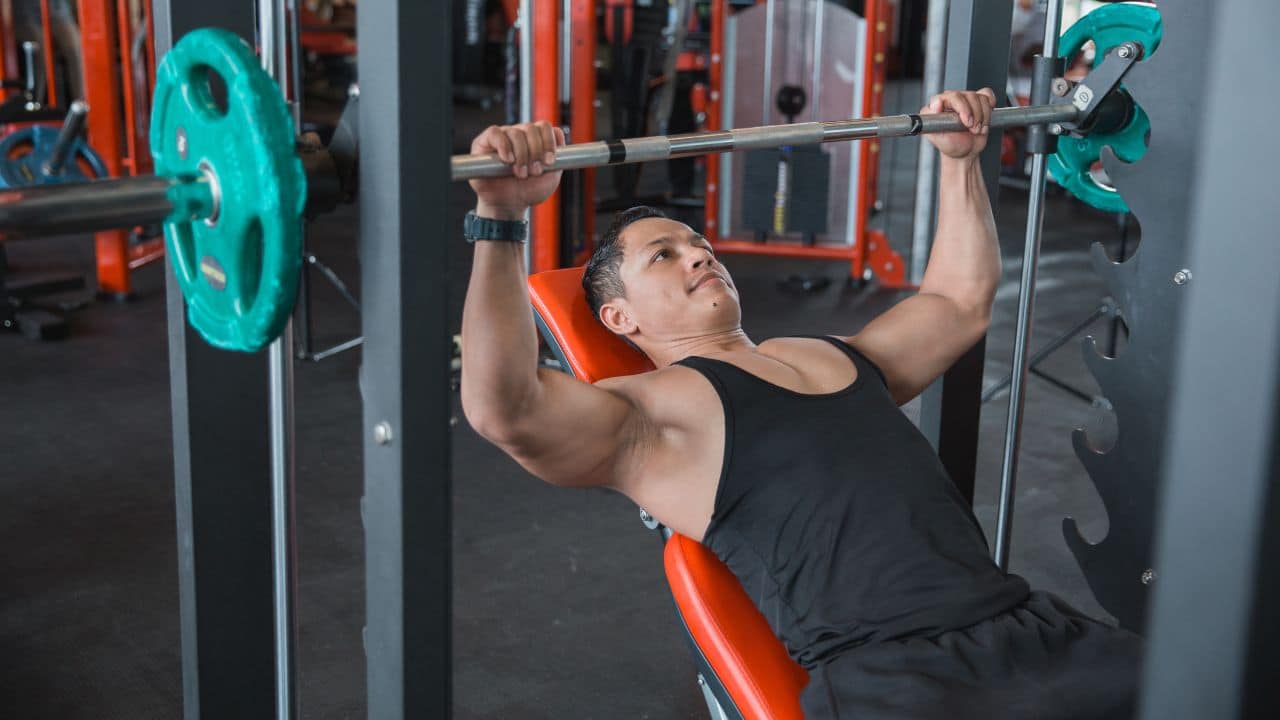To build bigger and more impressive biceps, you need more than just repetitive exercises; it takes time and a smart approach.
Cable machines are fantastic for bicep training, especially for beginners, thanks to their ease of use and the smooth, constant tension they provide.
This consistent tension leads to more time under strain, which is essential for muscle growth.
This article will explore effective bicep cable workout plans that combine proven exercises with practical strategies to maximize your gains and achieve strong biceps.
How to Train Bicep With Cable
1. Training Volume (Sets And Reps)
Of course, the number of sets and reps will be determined based on your fitness journey, but here is a great starting point:
The number of reps you should do depends on your goals, whether they are to increase strength or build muscle mass and endurance.
- For muscle growth, it is best to do for around 8–12 reps per set.
- Muscle Endurance, do 15-20+ reps per set.
| Level | Weekly Sets | Reps | Frequency |
|---|---|---|---|
| Beginner | 8-10 | 8-12 | 1-2 times per week |
| Intermediate | 10-15 | 8-12 | 1-2 times per week |
| Advanced | 15+ | 8-15 | 2-3 times per week |
2. Add Bicep Cable Exercises In Your Workout Routine
They can be incorporated into your workout routine in various ways. Here are some options:
- As a standalone exercise: Do 3-4 exercises, 3-4 sets of 8-12 reps.
- As part of a back workout: Do 3-4 sets of 8-12 reps and other bicep exercises like the Deadlift and lats pulldown.
- As part of a full-body workout: Do 3-4 sets of 8-12 reps and other compound exercises like squats, deadlifts, and bench presses.
Beginner Bicep Cable Workout Plan
| Exercise | Sets | Reps |
|---|---|---|
| Cable Bicep Curl | 3-4 | 8-10 |
| Single-Arm Cable Curl | 3-4 | 10-12 |
| Cable Rope Hammer Curl | 3-4 | 8-10 |
Cable Only Bicep Workout Routine
| Exercise | Sets | Reps |
|---|---|---|
| Cable Curl | 4 | 8-10 |
| Cable Hammer Curl | 4 | 8-10 |
| Cable Drag Curl | 3 | 10-12 |
| Cable Reverse Curl | 3 | 10-12 |
Bicep Workout Routine
| Exercise | Sets | Reps |
|---|---|---|
| Barbell Curl | 4 | 8-10 |
| Concentration Curl | 3 | 10-12 |
| Cable Hammer Curl | 3 | 8-10 |
| Barbell Reverse Curl | 4 | 8-12 |
Back and Bicep Workout
| Exercise | Sets | Reps |
|---|---|---|
| Cable Lat Pulldown | 3-4 | 10-12 |
| Single-Arm Cable Row | 3 | 10-12 |
| Cable Seated Row | 3 | 10-12 |
| Cable Bicep Curl | 3-4 | 12-15 |
| Cable Rope Hammer Curl | 3 | 12-15 |
| High Cable Curl (Overhead) | 3 | 10-12 |
10 Best Cable Bicep Exercises
1. Cable Bicep Curl
This is a classic cable exercise where you pull the handle towards your shoulders and focus on full bicep contraction.
It provides consistent tension throughout the entire range of motion, thereby enhancing muscle engagement and growth in comparison to free weights.

2. Single-Arm Cable Curl (Low Pulley)
Use a low pulley to work each bicep separately. It helps improve unilateral focus and helps correct strength imbalances between arms.
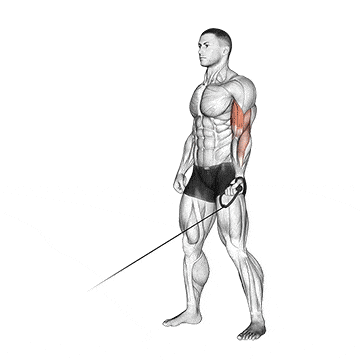
3. Cable Rope Hammer Curl
It uses a rope attachment that targets both the biceps and brachialis muscles. This exercise works the brachialis muscle more than regular curls.
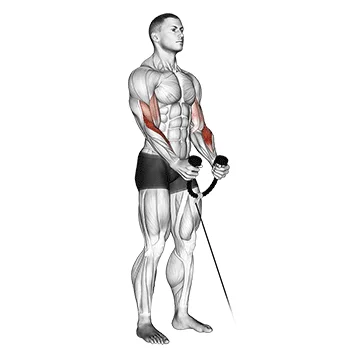
4. High Cable Curl (Overhead)
It is performed with the cables set at a high position and the handles pulled toward your forehead or chest.
This exercise puts the biceps in a stretched position, which makes them work harder and faster.
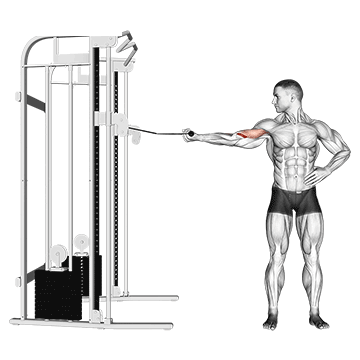
5. Cable Preacher Curl
A cable variation of the preacher curl, executed on a preacher bench, to isolate the biceps.
It isolates the biceps, limiting shoulder involvement, and focusing all the tension on the muscle. This improves peak contraction.
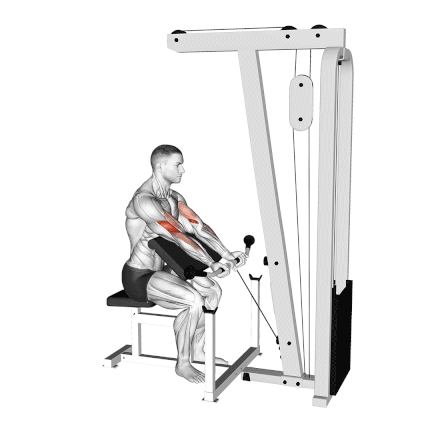
6. Cable Squatting Curl
This exercise is great if you don’t have a desk or if your gym is occupied. The advantage of this variation is that the pulley allows you to work with constant tension throughout the movement.
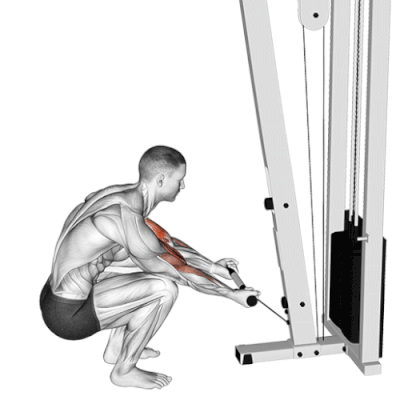
7. Cable Reverse Curl
The overhand grip version of this workout targets both the biceps and forearms.
This exercise targets the brachioradialis and forearm muscles, improving grip strength while also targeting the biceps.
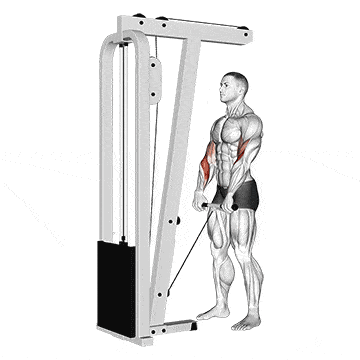
8. Ez Bar Cable Curl
The EZ bar’s angled grip allows for a more natural wrist position. The combination of the EZ bar and cables allows for controlled, smooth reps with less momentum.
9. Bayesian Curl (Cable Incline Curl)
The Behind-the-Back Cable Curl, also known as the Bayesian curl, is the same concept as the incline dumbbell curl. Your arms will curl with your elbows behind you, which emphasizes the long head.
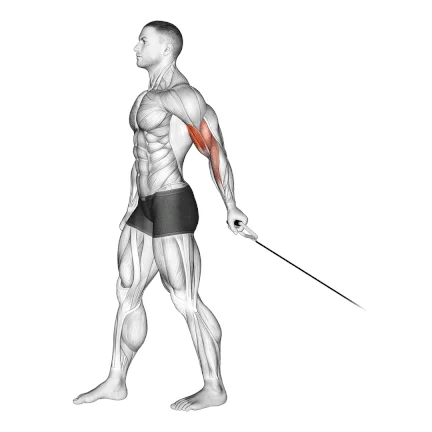
10. Lying Cable Curl
If you’re looking for a way to get more creative with your biceps curls, why not try lying (supine) cable curls?
The point of lying on your back for the lying cable curl is to eliminate all body momentum. Therefore, it’s prevents cheating and better isolate your elbow flexors.
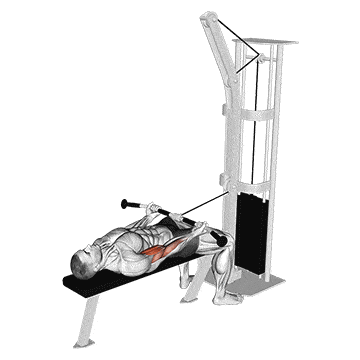
References & Resources
- Nunes, J.P.; Jacinto, J.L.; Ribeiro, A.S.; Mayhew, J.L.; Nakamura, M.; Capel, D.M.G.; Santos, L.R.; Santos, L.; Cyrino, E.S.; Aguiar, A.F. Placing greater torque at shorter or longer muscle lengths? Effects of cable vs. barbell preacher curl training on muscular strength and hypertrophy in young adults. Int. J. Environ. Res. Public Health 2020, 17, 5859
- Coratella, Giuseppe, Gianpaolo Tornatore, Stefano Longo, Nicholas Toninelli, Riccardo Padovan, Fabio Esposito, and Emiliano Cè. 2023. “Biceps Brachii and Brachioradialis Excitation in Biceps Curl Exercise: Different Handgrips, Different Synergy” Sports 11, no. 3: 64. https://doi.org/10.3390/sports11030064
- Staudenmann D, Taube W. 2015. Brachialis muscle activity can be assessed with surface electromyography. Journal of Electromyography and Kinesiology 25(2):199-204

